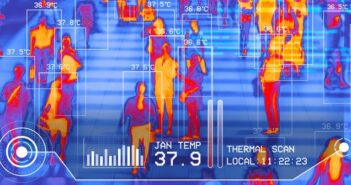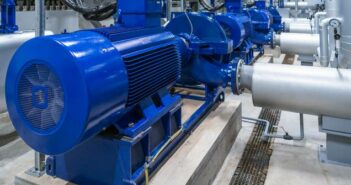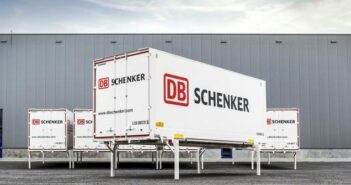ICI-Nobel is the classic example of servitization. ICI-Nobel manufactures explosives for quarries. While ICI-Nobel used to sell the explosives, they changed their business model and no longer offered the explosives, but the demolition as a service. It was ICI-Nobel’s special knowledge in optimizing blasting processes that made this step possible. The consequences of servitization were very quickly higher profits and, above all, increased customer loyalty.
Table of Contents: What awaits you in this article
Servitization: Definition
Servitization is the transformation from manufacturing companies to service companies. Instead of selling products, these companies provide services that use their products. But the products are no longer sold alone.
For the manufacturing companies, servitization sets in motion a profound process of change. The understanding of the product is fundamentally changed. These transformation processes are described by scientists such as Prof. Andy Neely at the University of Cambridge[3] and Prof. Tim Baines at Aston Business School.
The potential benefits can be seen in their disruptive power similar to the energies released by “Just-in-Time” and “Lean Manufacturing”. The tertiarization (development from an industrial to a service society) was accelerated by increasing prosperity, social change and last but not least by rapid digitization. The tertiarization in turn ensures a high level of acceptance of the products converted into services. Thus, servitization is a disruptive change in existing business models, which is carried and promoted by the zeitgeist in society and the economy. Solutions and results are above the purely material product and ensure a long-term customer relationship.
Delimitation: Servicing and product service systems
However, servitization is only given if manufacturers or providers completely complement their product portfolio and transform it into a pure service offering. The servicizing and also product service systems designate the sales transaction or the packages created for the sale in the offer portfolio, which contain the useful service and the products required for it.
Servitization examples: Examples
The process of servitization is not new. It has existed for over 100 years. However, in the last 20 years, servitization has become increasingly important. The driver of the boom is the globalization of the markets. Above all, companies in high-wage countries like Germany rely on servitization as protection against competition from low-wage countries. At best, the latter can offer products at low prices. However, if customer companies buy the solution as a whole (service including the product) via servitization, the low-wage countries can no longer sell it due to the lack of expertise in using the products, since the customer companies can no longer use the product on their own. Their internal experts for product use have not been available since the servitization company started using their service.
Servitization in logistics
Major megatrends are currently influencing logistics: the main players are digitization and servitization. And the changes leave a clear mark on logistics. The Supply Chain Services working group at the Fraunhofer Institute identified eight megatrends in an internal study , which have a lasting influence on logistics and change logistical processes significantly.
- Digitization
- 3D printing
- Autonomous Driving
- Robotics
- Information Society
- Diversification
- Servitization
- Sustainability
As stated by Professor Dr. Alexander Pflaum, head of the Fraunhofer working group SCS, “This is the reason why products will become less important compared to data and services”. The effects of digitization and servitization on logistics are enormous, which are particularly evident in intralogistics. Tugger trains support the trend towards lean process handling and are changing transport processes. An example is the tugger train, a combination of a tractor and several trailers. The tugger train transports the load on the trailers along a specified route, stopping at defined stops. Materials are loaded there, others are unloaded. The Fraunhofer SCS working group has developed a key figure system for this purpose, which allows operating data from the production and storage environment to be continuously recorded and evaluated. Changes and trends can thus be recognized and the operation of the tugger train can be optimised. The data recorded by the IoT sensors on the tractor include driving and idle times as well as the load status.
-
Example Rolls Royce
Rolls-Royce’s Power by the Hour model is also operated by other aircraft engine manufacturers. Manufacturers no longer sell engines. Rather, one assumes responsibility for the maintenance and repair of the engine provided. The fee is calculated for the operating hours of the engines. For Rolls Royce, she calculated the servitization. Overall, sales increased. In addition, the revenue streams became more even.
-
Example Alstom
Alstom offers advanced maintenance services where performance is prioritized for its customers based on the “lost customer hours” principle. This means that a key objective is to minimize the length of delays caused by train cancellations and to keep the number of passengers affected as low as possible. As part of the contract, Alstom pays fines to the customer if vehicles are unavailable during peak periods.
Alstom’s TrainLife Services (TLS) package includes services such as condition-based maintenance, management and technical operations support, and performance improvement – supporting customers’ needs for a reliable, high-quality service.
-
Example Xerox
Xerox is known as a manufacturer of photocopiers. Xerox has transformed its business model and is now positioned as a business process and management company. Xerox currently generates more than half of its sales from services.
In recent years, Xerox has specialized in document publishing and production services, document management and business process outsourcing. Examples of real-world services include providing learning solutions for Hertz, including curriculum content, administration and learner support services. For Siemens Italy, Xerox created a digital archive and interface to improve document control and reduce paper waste and consumption.
Xerox itself describes the process it has gone through as “the essence of servitization”: using technology to offer services that are tightly coupled with existing products.
-
Example ICI-Nobel
The former British company ICI-Nobel specialized in explosives for quarries. As part of servitization, ICI-Nobel now offered demolition as a service. This change was made possible primarily by the company’s specialist knowledge of optimizing blasting processes. Higher profits and stronger customer loyalty were the positive consequences.
Advantages
Benefits for manufacturers
A major advantage for companies that have evolved from manufacturer to service provider is the stronger bond between customer companies. With the purchase of the service, the purchasing company relinquishes a piece of application knowledge in-house and makes itself dependent on the expertise of the servitization company.
For companies in high-wage countries, servitization offers protection against offers from low-wage countries. The protection arises from the effected change in the purchasing habits of the customer companies. If customer companies have previously obtained the products and used them themselves through internal experts, they now buy the service including the product from the servitization company. With the loss of their own experts, the customer companies make themselves dependent on the servitization provider. They can no longer make use of cheap product offers from low-wage countries because there are no longer any experts in the company who could use the products. As a result, suppliers from low-wage countries are squeezed out of the market by servitization.
Services also generate additional sales and prevent margins from dwindling in pure product business as there is no price war with low-cost providers. Complex services are not as easily interchangeable as pure products, which leads to an intensification of the customer relationship. Another effect: the provision of services creates more intensive relationships on an interpersonal level. This also leads to stronger customer loyalty.
Benefits for customers
But servitization also brings great advantages for the customer company. Fixed costs for the investment in plants and machines or other products turn into variable costs. Operational risks such as equipment failure are shifted to the supplier. Conversely, the device manufacturer can operate the devices more efficiently and cost-effectively than the customer company could.
Servitization also brings with it a beneficial shift of interests. While the manufacturer made money from the repairs in the after-sales business and thus had opposite interests to the customer, it is now also in the manufacturer’s interest that the machines have as little downtime as possible and thus a long service life.
Cons
The transformation of the company is time-consuming and costly. But the implementation of the servitization business model is also complex. This is primarily due to the increased importance of the customer in the value chain. There the customer appears on several levels and increasingly demands more service up to 24/7 support from the provider. The product itself loses importance and the service gains in importance at the same time. At the same time, the effort involved in offering the service in line with market expectations also increases.
Servitization has also reversed the product development process and made it more complex. The development starts with the customer and goes backwards to the manufacturer. Organizations today see their task in achieving a 100% customer-oriented production process.
A change in the company’s self-image and corporate culture are also prerequisites for the success of the transformation. The target definition is changing: away from the transaction-oriented business towards the so-called relationship business. The company’s competencies in product technology must be transformed into services and total solutions that represent the results expected by the customer. Also new for manufacturers is the increased responsibility for availability and value retention of the product. As responsibilities increase, so does the manufacturer’s risk with each level of service climbed.
Required Changes
- The product definition changes. If the customer only purchases one “service”, all levels of the value-added chain from the supply chain to development and sales need to be re-tracked.
- Economic considerations are becoming more complex, since the use of the products in the field with all its risks now has to be taken into account. If products and services are mixed in sales, the cost and profitability considerations become even more complex.
- Incentive systems in the “servitized” company have to be adjusted, as well as metrics and key figures. The new key figure “Days-without-failure-in-use” is given high weight, as it directly influences the cost-effectiveness through maintenance costs and indirectly through customer satisfaction and follow-up business.
- The infrastructure and the service know-how in the branch network are now becoming even more important. They directly support servitization and thus the speed of transformation of the company.
- IoT and BigData are becoming increasingly important. IoT comes to the fore because intelligent mesh networks enable comprehensive data collection. BigData becomes mandatory in order to gain insights from the collected data and to improve service quality and thus profitability.
- A sophisticated service lifecycle management infrastructure becomes essential. Information and communication technologies are not only necessary in all business processes, they also offer additional opportunities to offer the customer additional services.
Service Types
Three service types accompany the transformation towards servitization. They show different levels of maturity and are based on Tim Baines. In the first two stages, services such as leasing, maintenance, installation, disposal and training are often linked to the products.
-
Base Services
The “Base Services” implement the concept of servitization only incompletely. These are services as a supplement to products. An example of this is a spare parts service. Nevertheless, the customer still purchases the product himself and decides whether he also wants to purchase the base service.
-
Intermediate Services
The “Intermediate Services” are no longer used event-controlled, but proactively ensure the functionality and performance of the product. This is done through preventive maintenance.
-
Advanced Services
Only this third step allows the customer to buy an expected result. “Advanced Services” let the physical product (e.g. crane or truck) disappear in the service. The desired result and the desired performance are bought by the customer. This can also go beyond the scope of a one-off deal and extend to recurring purchases over a long period of time. In this case, the purchase can relate to a specific recurring service (a monthly transport volume).
This is where a product-service system is used for the first time. The physical product of the manufacturer no longer becomes the property of the customer. Rather, the former manufacturer keeps the machine and thus continuously provides services for the customer to the previously defined extent with a previously defined result.
Procedure
The servitization transformation requires a consideration of service lifecycle management. The more complex the transformation of servitization turns out to be, the more frequently it takes place in stages, beginning with simpler product additions through “Base Services”.














